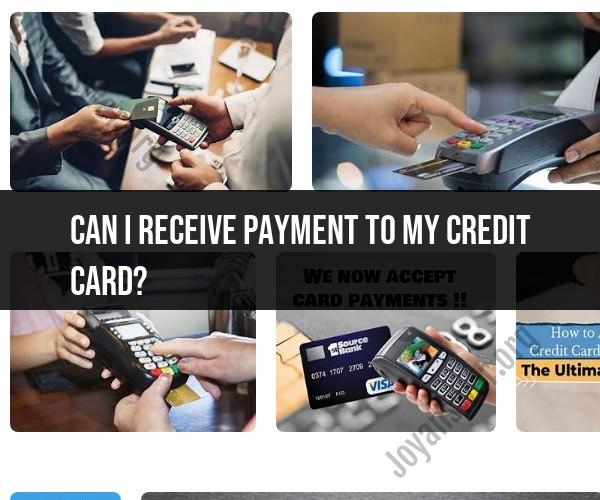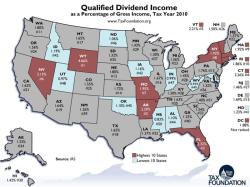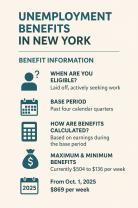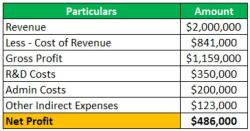Can I receive payment to my credit card?
Typically, you cannot receive payments directly to your credit card from other individuals or entities. Credit cards are designed for you to make purchases on credit, and they are issued by financial institutions with the expectation that you will pay back the borrowed funds, along with any applicable interest and fees.
Here's how credit card payments typically work:
You Make Payments: As the credit cardholder, it is your responsibility to make payments to the credit card issuer. You receive a monthly statement that outlines your charges, minimum payment due, and due date.
Payments to the Issuer: You can make payments to your credit card issuer through various methods, including online payments, check or money order, automatic withdrawals, or in-person at a bank branch or payment center. These payments are applied to your outstanding balance.
Credit Limit: Your credit card has a predetermined credit limit, which represents the maximum amount you can borrow using the card. You cannot receive payments beyond this limit.
Interest and Fees: If you carry a balance on your credit card, you will likely incur interest charges and fees, depending on the terms and conditions of your card agreement. These charges can add to your outstanding balance.
Paying Off Debt: The goal with a credit card is to pay off your balance in full each month to avoid interest charges. If you cannot pay in full, you should at least make the minimum payment by the due date to avoid late fees and negative effects on your credit score.
While you cannot receive payments directly to your credit card, you can use your credit card to make purchases or payments to various merchants and service providers. Additionally, some credit card issuers may allow you to transfer a balance from another credit card or loan to your credit card account, effectively consolidating your debt onto one card. Balance transfers often come with terms and fees, so it's essential to review the terms before proceeding.
If you are expecting to receive funds from someone or want to transfer money to another person, consider using other payment methods, such as bank transfers, electronic payment services like PayPal or Venmo, or traditional checks. These methods allow you to send and receive money more directly without involving your credit card.
Receiving Payments to Your Credit Card: How It Works
There are two main ways to receive payments to your credit card:
- Direct deposit: This is the most common and efficient way to receive payments to your credit card. You can set up direct deposit with your employer, clients, or other payees. When you set up direct deposit, the funds are electronically transferred from the payer's account to your credit card account on a regular basis.
- Third-party payment processors: There are also a number of third-party payment processors that allow you to receive payments to your credit card. These processors typically charge a fee for their services, but they can be a convenient option if you are not able to set up direct deposit.
Once you have received a payment to your credit card, the funds will be available to use immediately. You can use the funds to make purchases, pay bills, or transfer to another account.
Funds to Plastic: Understanding the Process of Receiving Payments
The process of receiving payments to your credit card is relatively simple. Here are the steps involved:
- Provide your payer with your credit card account information. This includes your credit card number, expiration date, and CVV code.
- Set up direct deposit or use a third-party payment processor.
- Receive your payment! Once the payer has processed the payment, the funds will be deposited into your credit card account within a few business days.
Streamlining Finances: Receiving Payments Directly to Your Credit Card
Receiving payments directly to your credit card can offer a number of benefits, including:
- Convenience: It is a convenient way to receive payments, as the funds are deposited directly into your credit card account.
- Flexibility: You can use the funds to make purchases, pay bills, or transfer to another account.
- Rewards: You may earn rewards on the payments you receive, such as cash back or travel points.
If you are looking for a convenient and flexible way to receive payments, consider receiving them directly to your credit card.
Additional things to keep in mind:
- Some credit card companies may charge a fee for receiving payments to your credit card. Be sure to check with your credit card company to see if they have any fees associated with receiving payments.
- If you use a third-party payment processor, be sure to read the terms and conditions carefully before using their services.
- Be aware of the potential for fraud. When you provide your credit card information to someone, you are putting yourself at risk of fraud. Be sure to only provide your credit card information to trusted sources.
Overall, receiving payments to your credit card can be a convenient and flexible way to receive payments. However, it is important to be aware of the potential fees and risks involved.












